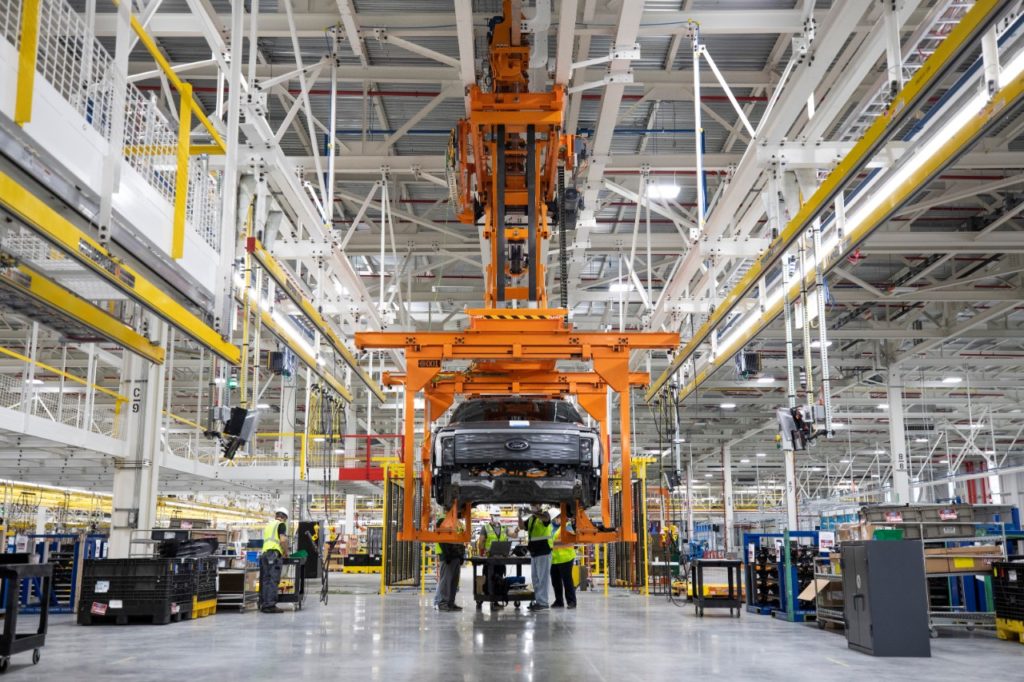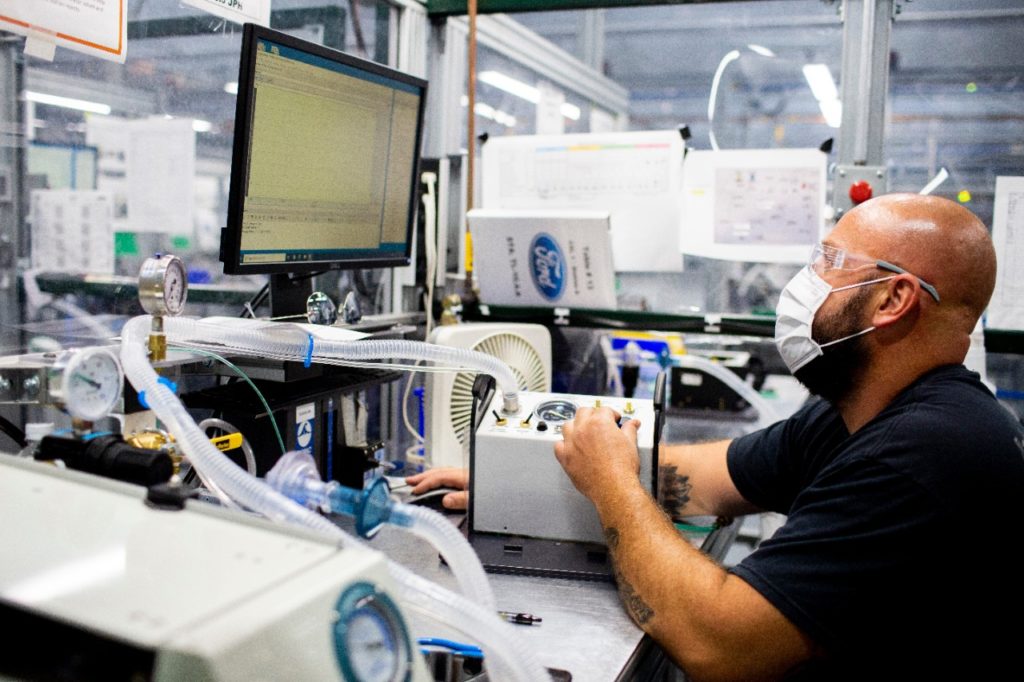Kentucky is known for a lot of things–fried chicken, the Derby, sweet tea, and much more. But the one thing for which the U.S. has to thank Kentucky, but always seems to be swept under the radar, is automobile manufacturing. Now maybe you’re here because you’re simply looking for Louisville online car sales. But did you know that Louisville has been one of the most important and vital cities in the early production of cars with the company that started it all?
Ford Motor Company has had manufacturing plants in Louisville almost since the beginning of its life. It has been one of the main players in the Louisville bloodstream, not just in terms of the city’s industrial life but also in terms of the city’s culture, economic health, and employment rates. These plants aren’t just an old piece of irrelevant history; two of them still stand today and continue to pioneer the automotive industry. But, these historical plants have had their fair share of hardship and have risked closure, which would mean losing an important piece of automotive history. Stay with us to learn more about the chronicle of Ford’s Louisville history. Let’s take a break from looking for sales and learn about how it all began.
Humble Beginnings
Ford first planted itself in Louisville in 1913, when it opened up a small shop at 931 South Third Street. Though only hosting 17 employees, this little shop was bustling with activity in numbers which by today’s standards would seem pitiful, but at the time were an impressive feat, thanks to Henry’s Ford’s brand new assembly line model. The brand new Ford Model T was all the rage, and the Louisville branch played a significant role in meeting this demand. The Model T bodies were partially assembled in Detroit, and then the partially assembled bodies were shipped in crates to Louisville, where the 17 employees would complete assembly and sell the vehicles. The Ford Louisville branch took off immediately and was ready to expand within a year. The company obtained two more buildings (both on Third Street) in order to expand their new branch.
Expansion
By 1916, Ford was producing 7,000 vehicles a year out of its four-story Third Street plant, which closed in 1925. This closure, however, made way for the 1925 opening of a new plant at 1400 Southwestern Parkway, which produced 400 cars per day (a truly impressive number for the time), including both of the original Fords – the Model T and Model A.
While this plant closed in 1955, Louisville Assembly Plant (LAP, which remains standing to this day!) opened that same year on Fern Valley Road and began assembling all Ford truck models and 16 of the 17 then-available body styles. This carried on for 14 years until the Kentucky Truck Plant (KTP, which also remains standing to this day!) opened in 1969 on Chamberlain Lane and became the new home for truck production.
Ford continued to be a leader in the automotive world, developing and advancing automotive technology, making it more accessible, more fluid, and more appealing. In 1987, Ford invested in a $260 million expansion (how’s that for a company that started in Louisville with 17 employees on Third Street?) at LAP to make a new Bronco II, which added 300 jobs.
Danger Zone
The coming years would be a roller coaster for the world as the economy geared up for a recession, and Ford would feel this in a particular way. In 1991, Ford was seeing slow sales, causing the company to engage in weeklong shutdowns at KTP. But across town, LAP workers were working round the clock to produce the Explorer, which saw an increase in sales by 38 percent. As Explorer sales climbed up the ladder, so did the Ford company, and in 1997, the company added 1,000 jobs as part of an expansion to KTP in order to increase the production of F-series trucks.
Ford’s troubles in Louisville were not over, though. While Ford’s Louisville plants were spared from job cuts included in a 2002 company-wide restructuring, 2007, just as it was for the rest of the world, was a time of great uncertainty for Ford’s historical Louisville branches. Think back to 2007. The recession has hit, and gas prices are skyrocketing, causing people to seek alternatives to driving. For those who do want to buy a vehicle, there is very little interest in full-size SUVs, which means that sales for some of Ford’s best-sellers, such as the Explorer, are going down. Just like everyone else, Ford has to respond accordingly. What happened next was almost a devastation to the history of Louisville and to the Ford Motor Company.
Ford Headquarters had to cut costs and downsize manufacturing operations. As part of this massive restructuring, Ford decided to close 16 plants in North America, and one of the plants on this list was LAP. It goes without saying that waves were made in Louisville when this information was released, as LAP is one of Ford’s most historic, memorable, and vital production plants. Those who understood the historical value of this plant sprung into action to keep it alive, with plant management, United Auto Workers Union (UAW) representatives, and even state and local elected officials began making trips to Detroit to present their case for the survival of LAP. At the helm of this effort was Joseph Hinrichs, who, at the time served as Group Vice President for Manufacturing and Labor Affairs, led the whole team to negotiate an agreement for the company to re-invest in LAP.
Well, Hinrich’s efforts were a success as LAP still stands in Louisville today. Not only were they a success for the branch itself, but they were a personal success for Hinrichs, who was eventually promoted to the position of President, Automotive at Ford before his retirement last year. So, 2007 had a happy ending after all.
What’s Happened Since
Now this, of course, is not the end of the Ford Louisville story, and it hasn’t all been 100 percent happy since. Like many companies in the past decade-and-a-half, Ford has struggled to find the balance between using technology to better itself while still providing jobs. Ford did have a massive layoff in 2010, but it has found a way to bring back many jobs since.
In 2019, Ford celebrated the 50th birthday of Louisville’s KTP. During this year, the company announced that it would invest $550 million dollars in both Louisville plants (LAP and KTP), with the state government authorizing $40 million dollars in tax incentives. Of course, shortly thereafter, the whole world came to a standstill when the COVID-19 pandemic struck; Ford had to respond by temporarily ceasing production at both Louisville plants, which was not an easy thing for Ford, nor any other business, to do.
Things began looking up for the company this year in 2021, however, when Ford announced its plans for a $5.8 billion investment in twin battery manufacturing plants in Hardin County, which will begin production in 2025 and provide 5,000 full-time jobs. So, let’s keep following Ford’s activity in Louisville as it embarks upon the next chapter of its history.
History in the Making
Louisville has a rich automotive history. While you can always be a part of this history by driving a Ford Super Duty, Expedition, or Escape (all of which are currently built at KTP and LAP), perhaps the best deal is being able to experience a rich piece of history by visiting either of these plants. These plants have been leaders in the growth of the automotive industry and have helped grow the city of Louisville. Both have provided many jobs to Louisville citizens all throughout their history and continue to this day to be a vital part of the city’s history and culture. So, whether you are a Louisville citizen or just passing through on a road trip, it’s worth stopping by to see this piece of history.






